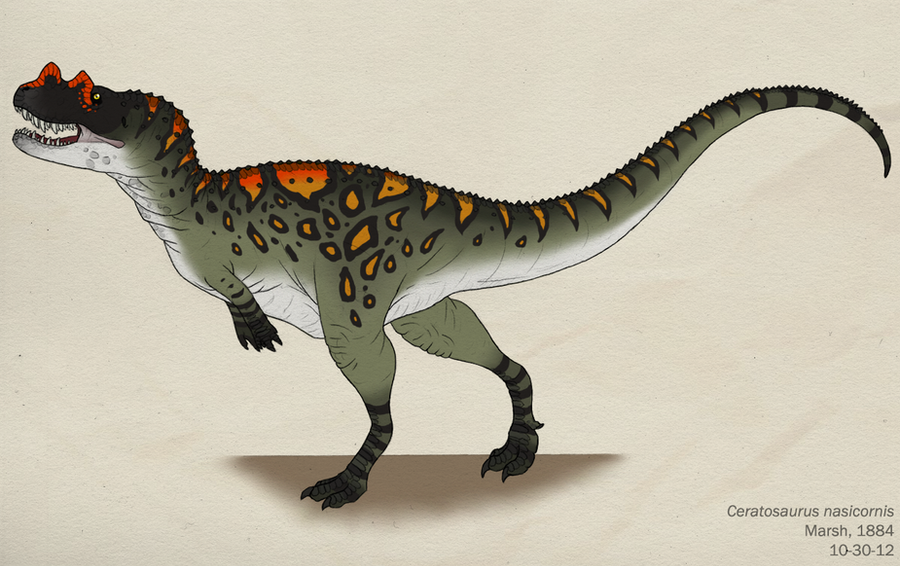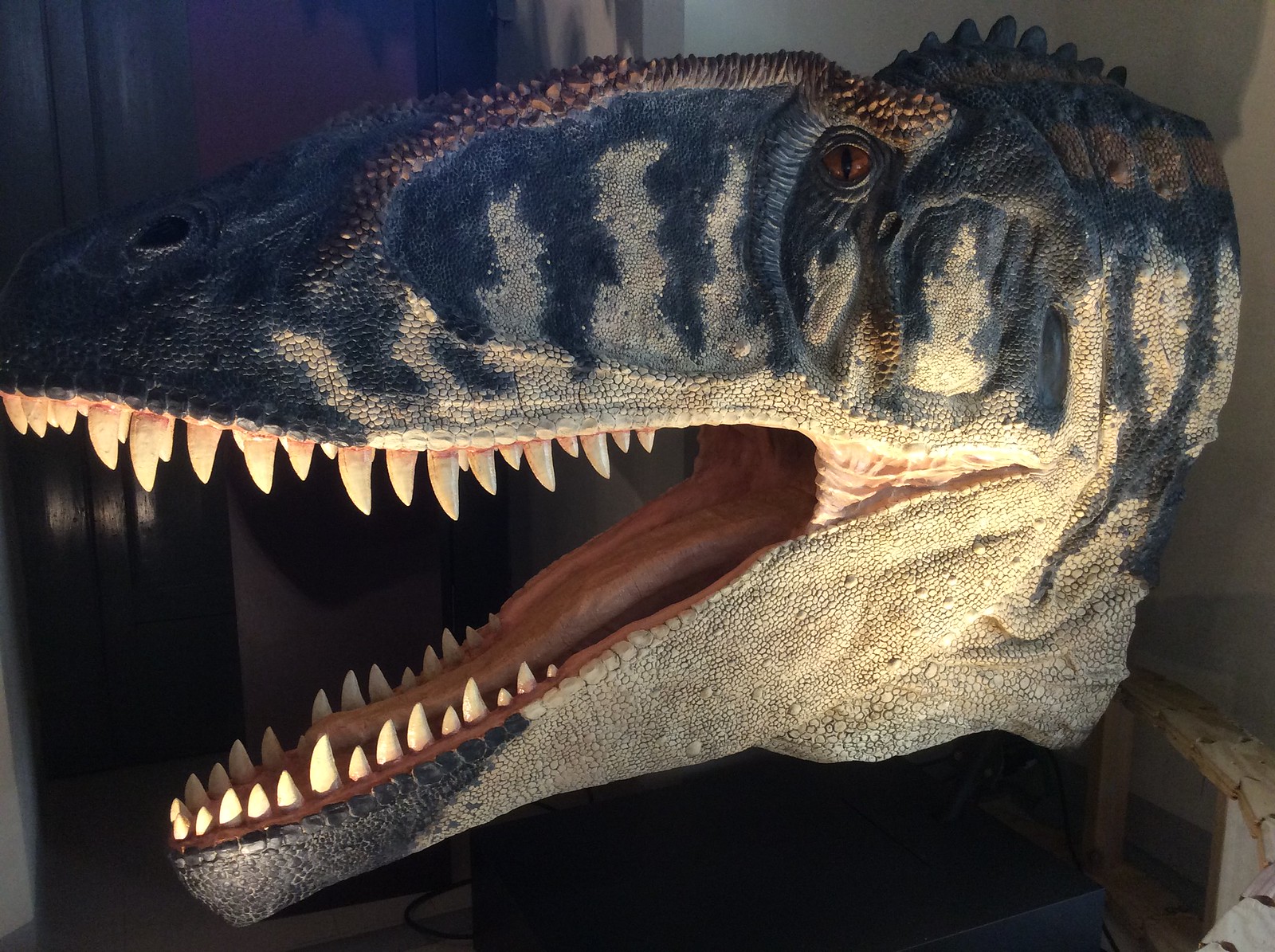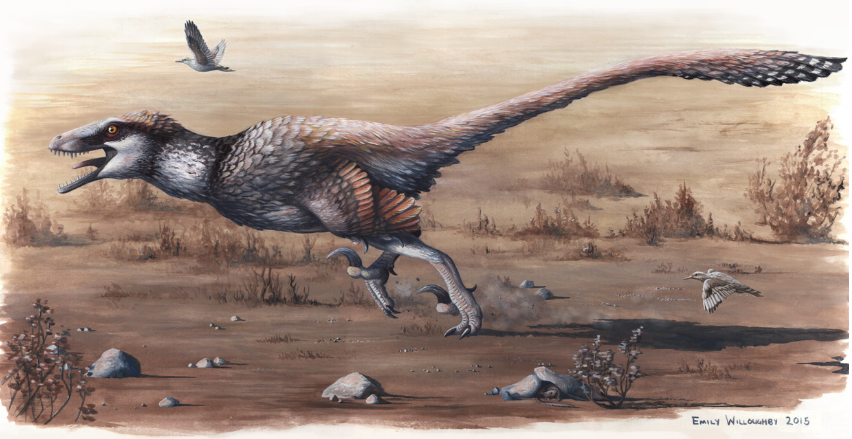Post by Carcharodon on Dec 28, 2013 4:27:23 GMT 5
Ceratosaurus nasicornis
Ceratosaurus meaning "horned lizard", in reference to the horn on its nose (Greek  ??/
??/
 ?, keras/keratos meaning "horn" and
?, keras/keratos meaning "horn" and 
 /sauros meaning "lizard"), was a large predatory theropod dinosaur from the Late Jurassic Period (Kimmeridgian to Tithonian), found in the Morrison Formation of North America, in Tanzania and Portugal. It was characterized by large jaws with blade-like teeth, a large, blade-like horn on the snout and a pair of hornlets over the eyes. The forelimbs were powerfully built but very short. The bones of the sacrum were fused (synsacrum) and the pelvic bones were fused together and to this structure (Sereno 1997) (i.e. similar to modern birds). A row of small osteoderms was present down the middle of the back. Ceratosaurus was a fairly typical theropod, with a large head, short forelimbs, robust hind legs, and a long tail. Uniquely among theropods, Ceratosaurus possessed dermal armor, in the form of small osteoderms running down the middle of its back. The tail of Ceratosaurus comprised about half of the body's total length. It was thin and flexible, with high vertebral spines. The type specimen was an individual about 17.5 feet (5.3 m) long; it is not clear whether this animal was fully grown. David B. Norman (1985) estimated that the maximum length of Ceratosaurus was 20 feet (6 m). A particularly large Ceratosaurus specimen from the Cleveland-Lloyd Quarry (UUVP 81), discovered in the mid-1960s, may have been up to 23 feet (7 m) long. Marsh (1884) suggested that Ceratosaurus weighed about half as much as Allosaurus. In Predatory Dinosaurs of the World, published in 1988, Gregory S. Paul estimated that the C. nasicornis holotype skeleton came from an animal weighing about 524 kilograms (1,160 lb).
/sauros meaning "lizard"), was a large predatory theropod dinosaur from the Late Jurassic Period (Kimmeridgian to Tithonian), found in the Morrison Formation of North America, in Tanzania and Portugal. It was characterized by large jaws with blade-like teeth, a large, blade-like horn on the snout and a pair of hornlets over the eyes. The forelimbs were powerfully built but very short. The bones of the sacrum were fused (synsacrum) and the pelvic bones were fused together and to this structure (Sereno 1997) (i.e. similar to modern birds). A row of small osteoderms was present down the middle of the back. Ceratosaurus was a fairly typical theropod, with a large head, short forelimbs, robust hind legs, and a long tail. Uniquely among theropods, Ceratosaurus possessed dermal armor, in the form of small osteoderms running down the middle of its back. The tail of Ceratosaurus comprised about half of the body's total length. It was thin and flexible, with high vertebral spines. The type specimen was an individual about 17.5 feet (5.3 m) long; it is not clear whether this animal was fully grown. David B. Norman (1985) estimated that the maximum length of Ceratosaurus was 20 feet (6 m). A particularly large Ceratosaurus specimen from the Cleveland-Lloyd Quarry (UUVP 81), discovered in the mid-1960s, may have been up to 23 feet (7 m) long. Marsh (1884) suggested that Ceratosaurus weighed about half as much as Allosaurus. In Predatory Dinosaurs of the World, published in 1988, Gregory S. Paul estimated that the C. nasicornis holotype skeleton came from an animal weighing about 524 kilograms (1,160 lb).

Utahraptor ostrommaysi
Utahraptor (meaning "Utah's predator" or "Utah thief") is a genus of theropod dinosaurs, including the largest known members of the family Dromaeosauridae. Fossil specimens date to the upper Barremian stage of the early Cretaceous period (in rock strata dated to 126 ± 2.5 million years ago). It contains a single species, Utahraptor ostrommaysi. The holotype specimen of Utahraptor is fragmentary, consisting of skull fragments, a tibia, claws and some caudal (tail) vertebra. These few elements suggest an animal about twice the size of Deinonychus. Like other dromaeosaurids, Utahraptor had large curved claws on their second toes. One claw specimen is preserved at 22 centimetres (8.7 in) in length and is thought to reach 24 centimetres (9.4 in) restored. The largest described U. ostrommaysorum specimens are estimated to have reached up to 7 m (23 ft) long and about 500 kg (1,100 lb) in weight, comparable to a grizzly bear in size. Some undescribed specimens in the BYU collections may have reached up to 11 m (36 ft) long, though these await more detailed study.














